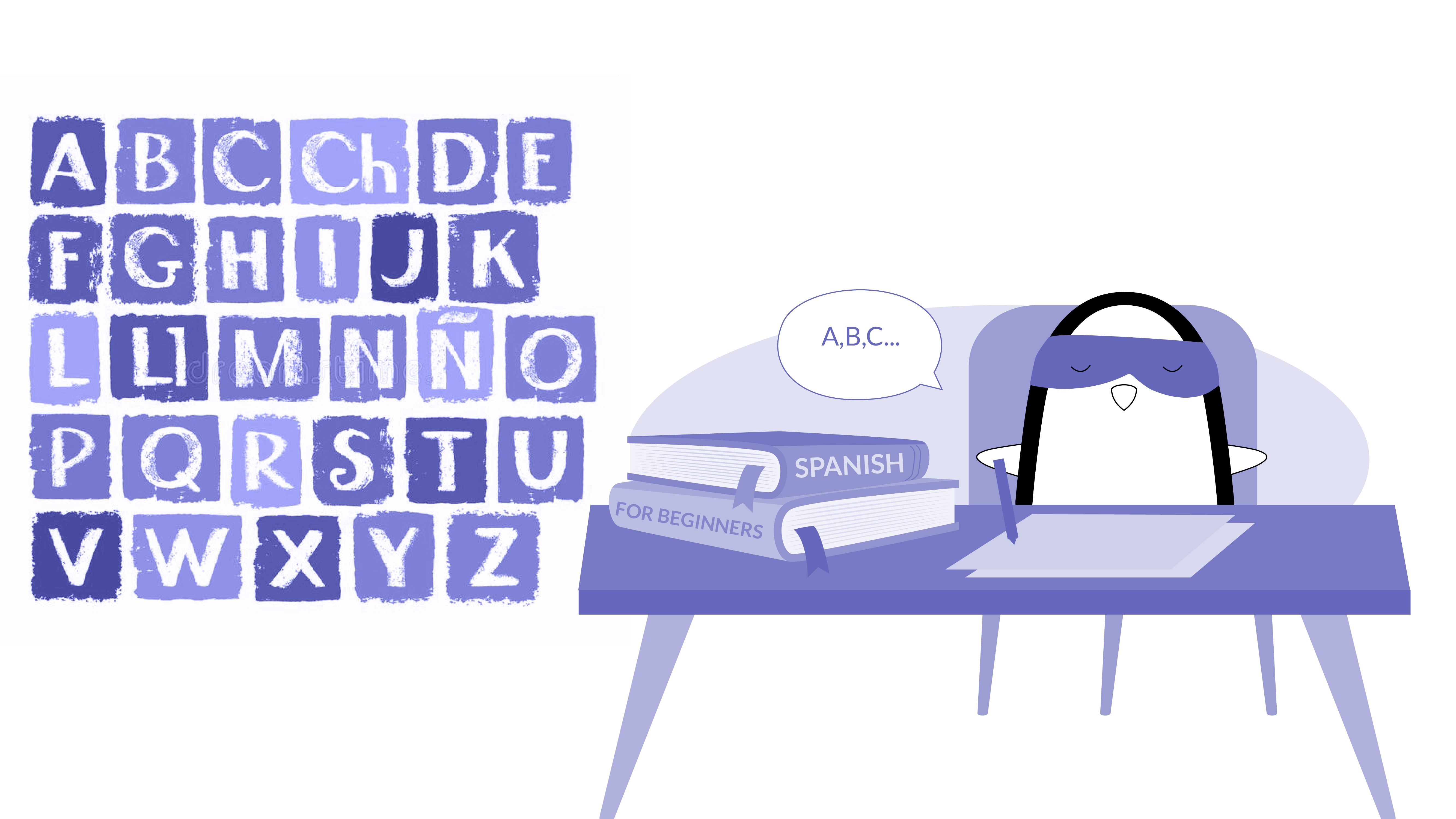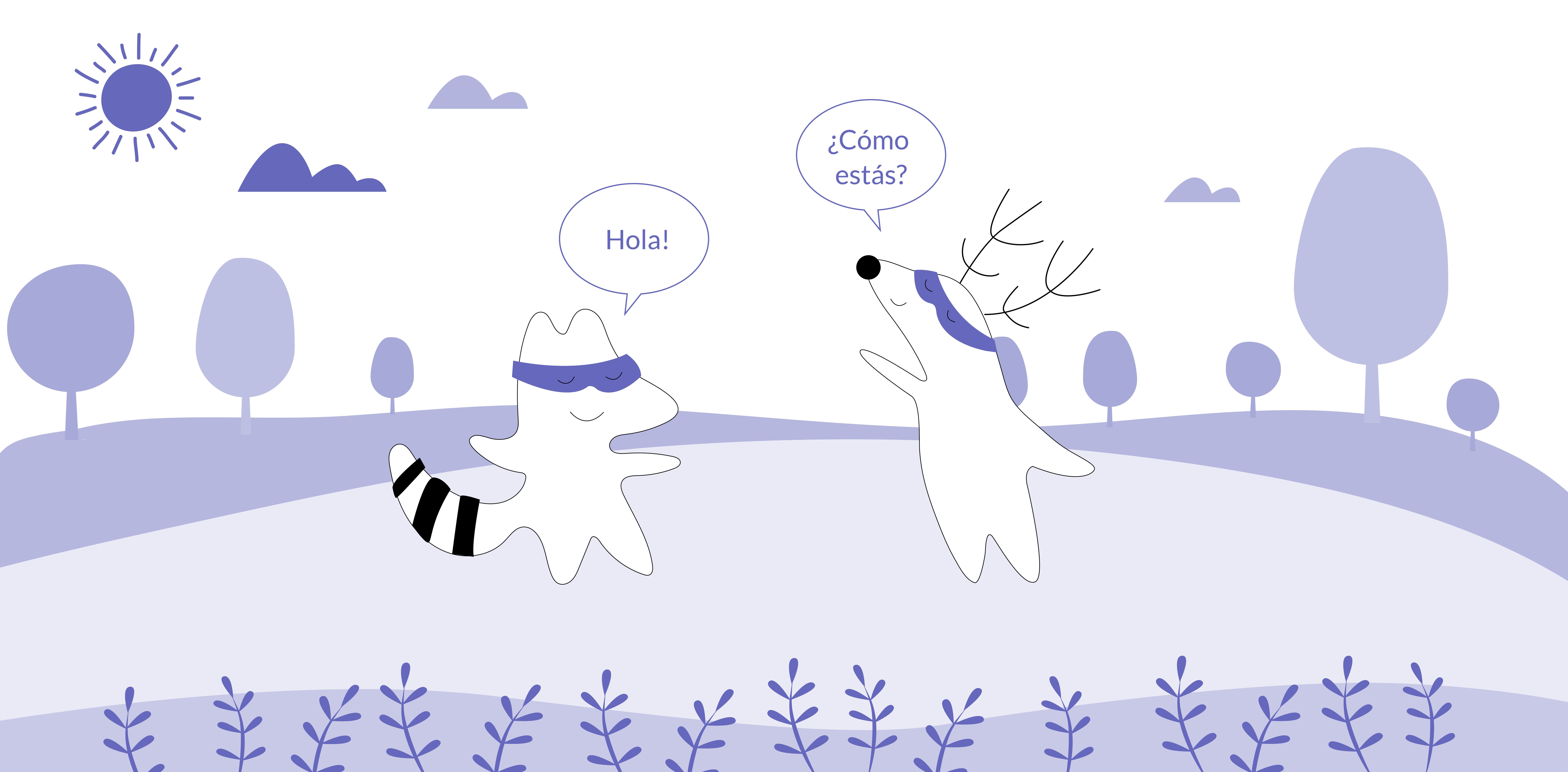
The Spanish language is rich in culture and full of vibrant sounds, so it’s no surprise that its alphabet reflects the same qualities. The Spanish alphabet consists of 27 letters – the same 26 letters that make up the English alphabet, plus one additional letter.
Learning and memorizing the Spanish alphabet can seem daunting at first, but with consistent practice, it will soon become second nature. The letters and symbols of the Spanish alphabet add variety, richness, and beauty to the language, making learning an enjoyable and rewarding journey.
With patience, diligence, and the right resources, anyone can become fluent in the language – all it takes is practice! So, let's get started with the Spanish alphabet letters.
Learn Spanish with Langster
The Spanish Letters
Spanish is a phonetic language, which means that letters often have just one pronunciation. Different from English, where the "o" in "women" is different from the "o" in "bold", the letter "o" in Spanish has just one pronunciation.
| Letter | Example 1 | Example 2 |
|---|---|---|
| o | oro | todo |
| o | women | bold |
| Letter | Example 1 | Example 2 |
|---|---|---|
| o | oro | todo |
| o | women | bold |
So, differentiating between letters is essential to communicating accurately and effectively in this language. Each letter has its own unique sound that can be heard when spoken aloud with proper intonation.

The 27 letters of the Spanish alphabet are (in capital and lower-case letters):
| Capital Letter | Lower case | Pronunciation of the letter |
|---|---|---|
| A | a | a |
| B | b | be |
| C | c | ce |
| D | d | de |
| E | e | e |
| F | f | efe |
| G | g | ge |
| H | h | hache |
| I | i | i |
| J | j | jota |
| K | k | ka |
| L | l | ele |
| M | m | eme |
| N | n | ene |
| Ñ | ñ | eñe |
| O | o | o |
| P | p | pe |
| Q | q | cu |
| R | r | erre |
| S | s | ese |
| T | t | te |
| U | u | u |
| V | v | ve |
| W | w | doble ve |
| X | x | equis |
| Y | y | i griega |
| Z | z | seta |
| Capital Letter | Lower case | Pronunciation of the letter |
|---|---|---|
| A | a | a |
| B | b | be |
| C | c | ce |
| D | d | de |
| E | e | e |
| F | f | efe |
| G | g | ge |
| H | h | hache |
| I | i | i |
| J | j | jota |
| K | k | ka |
| L | l | ele |
| M | m | eme |
| N | n | ene |
| Ñ | ñ | eñe |
| O | o | o |
| P | p | pe |
| Q | q | cu |
| R | r | erre |
| S | s | ese |
| T | t | te |
| U | u | u |
| V | v | ve |
| W | w | doble ve |
| X | x | equis |
| Y | y | i griega |
| Z | z | seta |
Memorizing each Spanish alphabet letter is the first step to mastering the language!
A Spanish - English Comparison
The Spanish alphabet is similar to the English alphabet in terms of the number of letters and their basic sounds, but there are some notable differences, beginning with how many letters each one has. Let's explore them.
Letter Names
The official Spanish language alphabet is often referred to as "abecedario." While the English alphabet names the letter "w" as "double-u," in Spanish it is called "uve doble" (double-v). Additionally, the letter "y" is known as "i griega" (Greek i) in Spanish.
Spanish Alphabet Pronunciation
Most of the sounds of the letters in Spanish are similar to their English counterparts, but there are a few differences:
| Letter | Explanation | Spanish example | English pronunciation |
|---|---|---|---|
| C | Before "a," "o," or "u," it has a hard "k" sound | casa | house |
| C | Before "e" or "i," it has a soft "s" sound | ciudad | city |
| G | Before "e" or "i," it has a softer "h" sound | gente | people |
| J | It is pronounced as a strong "h", like the English "hello" | jugo | juice |
| R | It is typically pronounced with a single tap of the tongue against the roof of the mouth | rojo | red |
| Letter | Explanation | Spanish example | English pronunciation |
|---|---|---|---|
| C | Before "a," "o," or "u," it has a hard "k" sound | casa | house |
| C | Before "e" or "i," it has a soft "s" sound | ciudad | city |
| G | Before "e" or "i," it has a softer "h" sound | gente | people |
| J | It is pronounced as a strong "h", like the English "hello" | jugo | juice |
| R | It is typically pronounced with a single tap of the tongue against the roof of the mouth | rojo | red |
Additional Letters
The Spanish alphabet used to include two additional letters that do not exist in English. While they are still used by Spanish speakers, they do not exist as letters anymore (only in Spanish spelling):
- "Ch," pronounced as in the English word "church."
- "Ll," pronounced similarly to the "sh" sound in English words like "she” in Argentina and as “yah” in other Spanish-speaking countries.
Letter Frequency
The frequency of letters in Spanish differs from English. For example, the letter "e" is the most commonly used letter in Spanish, whereas in English, it is "t." This variation affects word patterns and the frequency of certain letter combinations in Spanish words.
It's worth noting that in 2010, the Spanish Royal Academy (Real Academia Española) and the Association of Spanish Language Academies made changes to the Spanish alphabet, removing the letters "ch," "ll," "rr," and "gu" from the official alphabet in all the Spanish accents.
They are now considered letter combinations, and their individual entries were removed from dictionaries.

The Special Letter Ñ (eñe)
The letter "ñ" is the only special character that is part of the official Spanish alphabet and serves as a distinct sound and symbol.
This letter does not exist in the English alphabet. And, in terms of Spanish pronunciation, it has a unique sound similar to the "ny" in the English word "canyon," as in the Spanish word "niño" (child).
Let's have a look at more examples:
| Spanish example | English translation |
|---|---|
| Año | Year |
| Mañana | Tomorrow |
| Baño | Bathroom |
| Caño | Tube |
| Spanish example | English translation |
|---|---|
| Año | Year |
| Mañana | Tomorrow |
| Baño | Bathroom |
| Caño | Tube |
Why Learn the Spanish Alphabet?
The Spanish alphabet is a valuable tool for anyone looking to learn the language. From communicating with native speakers to reading books, newspapers, and magazines written in Spanish, understanding the alphabet is essential if you wish to speak Spanish fluently.

Here are some other reasons why learning the Spanish alphabet is important:
- Proper Pronunciation: Understanding the Spanish alphabet helps you pronounce Spanish words correctly
- Spelling and Writing: By familiarizing yourself with the letters and their order, you can accurately form words and sentences in Spanish. This skill is particularly important when writing emails, letters, or any other form of written communication.
- Building Vocabulary: Learning the alphabet helps you expand your Spanish vocabulary. It allows you to recognize and decipher new words when reading and listening to Spanish texts.
- Reading and Comprehension: When you learn the Spanish alphabet, you can read Spanish texts more effectively, as you can sound out words and gain a better understanding of written materials, including books, newspapers, articles, and websites.
- Cultural Appreciation: Acquiring knowledge of the Spanish alphabet is a way to appreciate and engage with Spanish-speaking cultures around the world, openingdoors to literature, music, art, and other cultural expressions.
- Language Learning Progression: Learning the Spanish alphabet is often one of the first steps in language learning. It provides a solid foundation for further study, allowing you to move on to more complex grammar, vocabulary, and communication skills.
The Bottom Line

All in all, learning the Spanish alphabet is essential to better understand how to properly spell and pronounce words in Spanish. And, you don't have to just start memorizing the 27 letters one by one.
Instead, you can use effective, engaging resources such as Langster to learn Spanish with real-life stories. Start today, and dive deep into the Spanish-speaking world. ¡Buena suerte!
Learn Spanish with Langster









